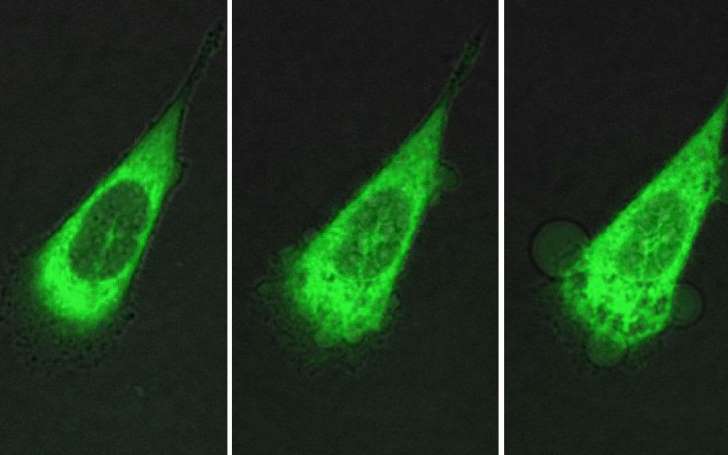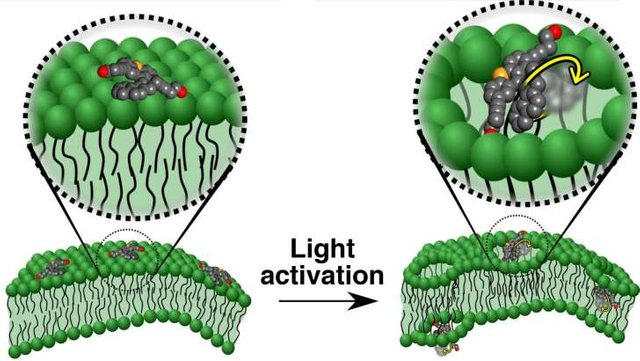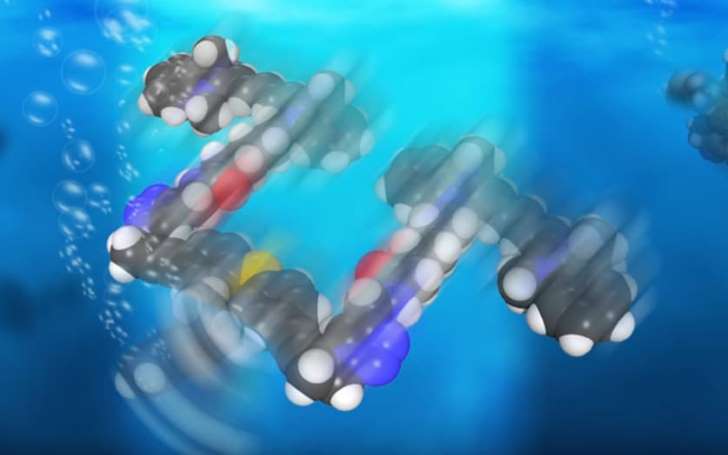
Nanomachines which can drill into cancer cells, killing them in just 60 seconds, have been developed by scientists.
The tiny spinning molecules are driven by light, and spin so quickly that they can burrow their way through cell linings when activated.
In one test conducted at Durham University the nanomachines took between one and three minutes to break through the outer membrane of prostate cancer cell, killing it instantly.
The 'motor' is a rotor-like chain of atoms that can be prompted to move in one direction, causing the molecule to rotate at high speed.

Dr Robert Pal of Durham University said: "We are moving towards realising our ambition to be able to use light-activated nanomachines to target cancer cells such as those in breast tumours and skin melanomas, including those that are resistant to existing chemotherapy.
“Once developed, this approach could provide a potential step change in non-invasive cancer treatment and greatly improve survival rates and patient welfare globally."
Motorised molecules that target diseased cells may deliver drugs or kill the cells by drilling into the cell membranes.
The scientists, whose work is reported in the journal Nature, created several different light-activated motorised molecules designed to home in on specific cells.
They found that the nanomachines needed to spin at two to three million times per second to overcome nearby obstacles and outpace natural Brownian motion, the erratic movement of microscopic particles suspended in fluid.
The molecules could be used either to tunnel into cells carrying therapeutic agents, or to act as killer weapons that blast open tumour membranes.

Without an ultraviolet trigger, the motor molecules located target cells but then remained harmlessly on their surfaces.
The prostate cancer cells start to 'bleb' or disintegrate after just 60 seconds, as seen in the bottom image
When triggered, the molecules rapidly drilled through the cell membranes.
Dr James Tour, a member of the international team from Rice University in Houston, US, said: "These nanomachines are so small that we could park 50,000 of them across the diameter of a human hair, yet they have the targeting and actuating components combined in that diminutive package to make molecular machines a reality for treating disease.
"In this study we have shown that we can drill into cells, animal cells, human cells using these nanomachines, they will attach to the surface and then a light will be shone upon them and they will drill right into the cell.
"For many years I never had envisioned the nanomachines being used medically, I though they were way too small, because they are much much smaller than a cell, but now this work has really changed my thoughts on this and I think therapeutically this will be a whole new way to treat patients, it's going to be an excellent application for cancer treatment, not just for killing of cells but for the treatment of cells, interacting with the human body using molecular machines."
The researchers are already proceeding with experiments in microorganisms and small fish and hope to move to rodents soon, ahead of clinical trials in humans if animal testing is successful.
Hi! I am a robot. I just upvoted you! I found similar content that readers might be interested in:
http://www.telegraph.co.uk/science/2017/08/30/nanomachines-drill-cancer-cells-killing-just-60-seconds-developed/
Downvoting a post can decrease pending rewards and make it less visible. Common reasons:
Submit
Amazing.... This could mean everything to the world of cancer research, but the concept of it kind of scares the hell out of me. Like a bad scifi novel, what evil this tech could accomplish is almost incomprehensible. The possibilities for this tech, good and bad alike potentially limitless. Great article brother, you might habe just inspired a short story
Downvoting a post can decrease pending rewards and make it less visible. Common reasons:
Submit